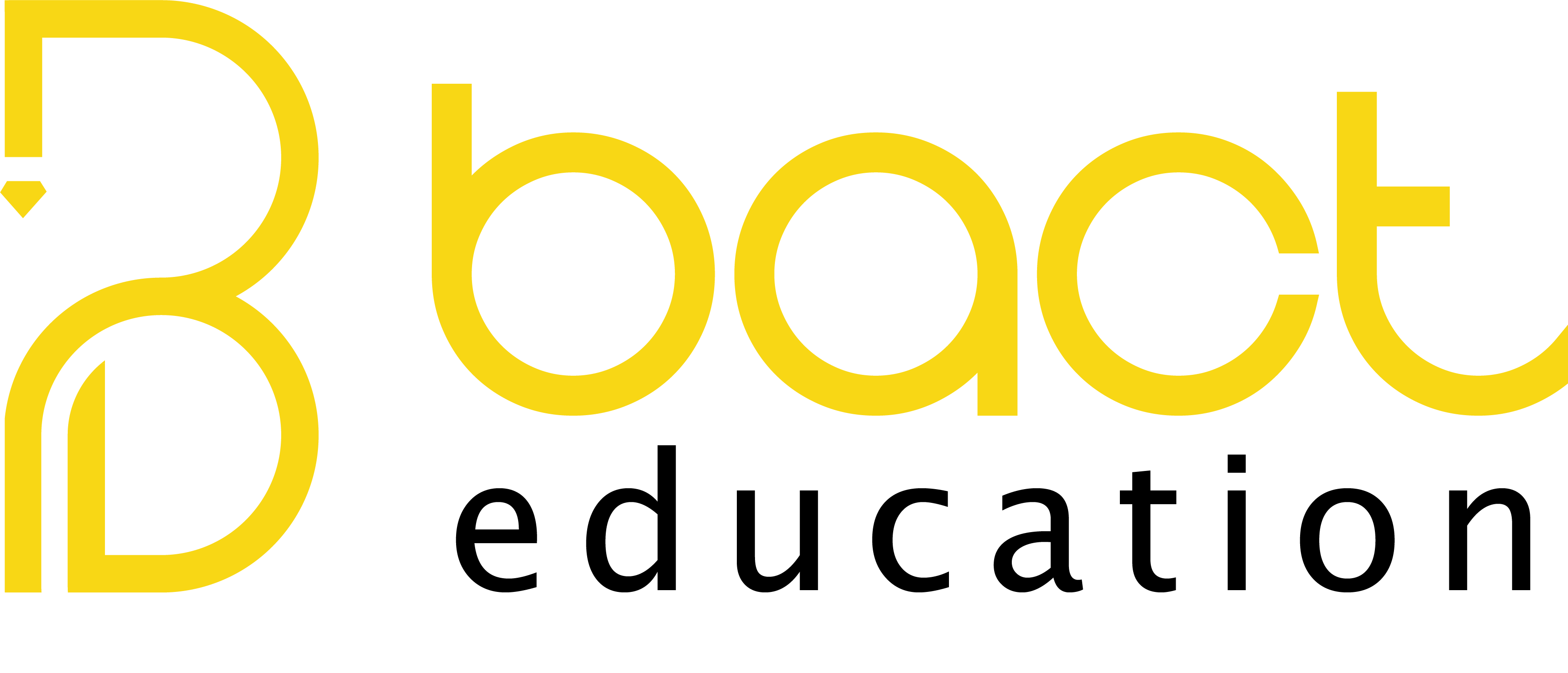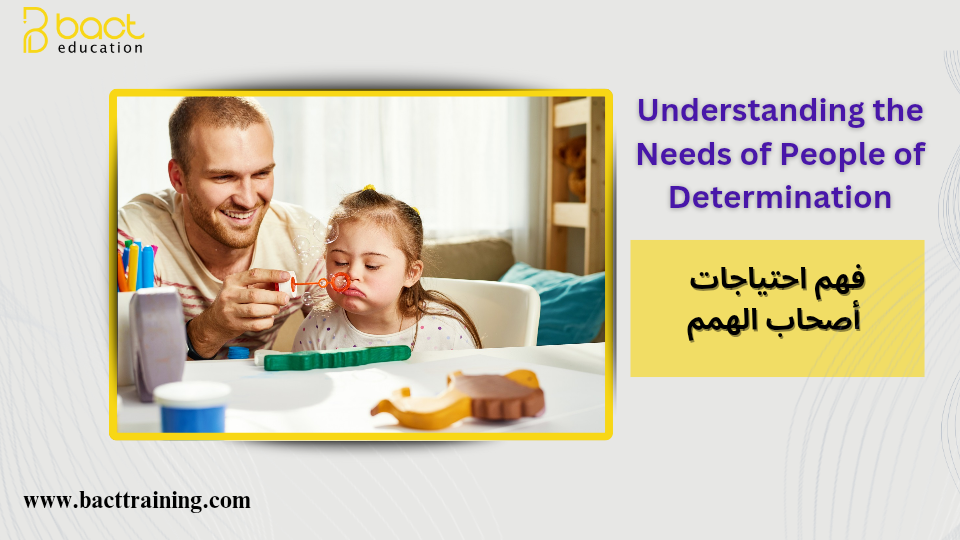Understanding the Needs of People of Determination
1- Defining People of Determination
The term “People of Determination” in the UAE is a progressive and inclusive term that encompasses individuals with various types of disabilities, whether physical, cognitive, sensory, or developmental. It is important to note that disability is not a singular experience; it varies from person to person. The spectrum of needs can range from mild to severe, and the accommodations required will vary accordingly. For educators, it is essential to understand that each student’s needs are unique, and a one-size-fits-all approach is rarely effective.
Types of Disabilities
People of Determination may experience challenges in the following areas:
- Physical Disabilities: These can involve mobility impairments or other health-related issues.
- Cognitive Disabilities: Intellectual disabilities, including Down syndrome or autism spectrum disorders, may affect learning, behavior, and social interaction.
- Sensory Disabilities: These include visual and hearing impairments that require specialized support.
- Learning Disabilities: Conditions like dyslexia or ADHD that impact students’ ability to process information or maintain attention in class.
- Multiple Disabilities: Some students may have a combination of different disabilities, which require a more holistic approach to their education.
Understanding the diverse needs of People of Determination allows educators to better support them in a classroom setting.
2. Creating an Inclusive Learning Environment
An inclusive classroom is one where all students, regardless of their abilities, feel valued and supported. The goal is not simply to provide accommodations, but to design teaching strategies and classroom environments that foster participation and engagement for everyone.
Universal Design for Learning (UDL)
UDL is a framework that advocates for flexible methods of teaching that can be adapted to accommodate different learning styles and needs. The three main principles of UDL are:
- Multiple Means of Representation: Presenting information in various formats (visual, auditory, tactile, etc.) to cater to different sensory and cognitive needs.
- Multiple Means of Action and Expression: Allowing students to demonstrate their understanding in different ways, whether through writing, speaking, drawing, or other creative methods.
- Multiple Means of Engagement: Offering diverse ways to motivate and engage students, recognizing that every student has different interests and strengths.
By applying these principles, educators can create classrooms that are accessible and engaging for all students, particularly those with disabilities.
Classroom Accessibility
To ensure that the physical classroom is accessible to all students, schools must consider aspects like wheelchair ramps, adaptive furniture, and the use of technology. Additionally, learning materials should be adapted, whether by offering large print books for students with visual impairments or providing audio versions of textbooks for students with reading difficulties.
Promoting Social Inclusion
An inclusive environment is not only about physical accessibility but also about fostering a culture of respect and understanding. Encouraging collaboration between students of all abilities promotes social inclusion and reduces feelings of isolation. Peer mentoring programs, group projects, and classroom discussions are excellent ways to foster empathy and build a sense of community among students.
3. Effective Teaching Strategies for Students of Determination
Differentiated Instruction
Differentiated instruction involves tailoring teaching methods to meet the varied needs of students. For students of determination, this means adjusting content, process, and product according to their learning styles, interests, and abilities. For instance:
- Content: Simplifying or expanding the material based on the student’s current understanding.
- Process: Providing different ways for students to engage with the material (e.g., using visual aids, videos, or hands-on activities).
- Product: Offering alternative ways for students to show their learning, such as oral presentations instead of written reports, or projects instead of tests.
Use of Technology
Technology has become an essential tool in supporting students of determination. Many apps and digital platforms are designed to assist students with disabilities, including speech-to-text software, audio books, and learning management systems that provide a range of accommodations. For example:
- Speech Recognition Tools: Help students with writing difficulties express their ideas.
- Visual and Auditory Aids: Provide alternative ways for students with sensory impairments to access information.
- Interactive Platforms: Gamified learning platforms can motivate students and help them stay engaged with the material.
Collaborative Teaching Models
Co-teaching or team teaching, where general education teachers collaborate with special education teachers, allows for a more inclusive approach. This model helps ensure that students of determination receive the support they need within the mainstream classroom while also benefiting from the expertise of special education professionals.
4. Collaboration with Families and Specialists
Building Partnerships with Families
Families are essential partners in the educational journey of students of determination. Open communication between teachers and parents allows for a holistic approach to addressing the child’s needs. Teachers can learn about strategies that work at home, and parents can be kept informed about progress and challenges at school. Regular meetings, updates, and collaborative decision-making are key to supporting students effectively.
Working with Specialists
Specialists, such as speech therapists, occupational therapists, and psychologists, provide valuable expertise in supporting students with specific needs. Schools can work with these professionals to create individual education plans (IEPs) or personalized learning plans (PLPs) that address each student’s strengths and challenges. These plans should be revisited regularly to ensure that the student’s needs are being met and that progress is being made.
5. Real-World Examples and Innovations
Across the world, numerous schools and educational programs are successfully implementing inclusive practices for students of determination. For instance:
- In some schools, the use of assistive technology like voice-activated devices has allowed students with physical disabilities to participate more actively in class.
- Special education programs that incorporate project-based learning and inquiry-based methods have helped students with autism develop stronger social skills and engage in creative thinking.
- International initiatives have also introduced inclusive curriculum frameworks that integrate life skills, creativity, and adaptive behavior alongside traditional academic subjects.
By focusing on real-world success stories, educators can find inspiration and motivation to implement similar strategies in their own classrooms.
Conclusion: The Path Forward
Creating an inclusive educational environment for People of Determination is not just about meeting legal requirements; it is about embracing the value of diversity and equity in education. Every student, regardless of ability, deserves to feel supported and valued in the classroom. By understanding their unique needs, fostering an inclusive environment, implementing effective teaching strategies, and collaborating with families and specialists, educators can ensure that all students have the opportunity to succeed.
The path forward lies in a commitment to inclusivity, understanding, and the recognition that the success of one student enriches the entire community. In the spirit of fostering a society where all individuals, regardless of their challenges, can live with dignity and contribute meaningfully, we must work together to create a future where every student, regardless of their abilities, is equipped to reach their fullest potential.
Call to Action:
As educators, it is important to continuously seek professional development, collaborate with colleagues and families, and remain open to innovative practices that support students of determination. Let us be champions of inclusivity, ensuring that no student is left behind.

